Born in 1968 to a French Moroccan mother and an American father, Philip Toleando is a London-born conceptual visual artist, as well as growing up in Casablanca, who lives and works from within New York City, utilising his passion from photography after a decade of working as an advertising art director. Targeting primarily socio-political themes, Toleando believes that a photograph should act as an unfinished sentence, exploring and executing this through a variation of mediums; photography, installation, sculpture, painting and video. Toledano uses photography as a form of internal storytelling through typically using staged sets, for example in his project ‘The Many Sad Fates Of Mr Toledano’, he uses different models to represent different life events and lifestyles in a uncanny and unsettling way. Alternatively, Philip Toledano in his project of ‘Another America’ he uses an Ai generative tool in order to depict worldwide events, such as devastation from 9/11 or the Influenza outbreak in order to challenge the notion of truth in photography and in the media.
Growing up in London, the British photojournalist recognised for his photography concerning war and urban strife, Don McCullin, motivated Toleando in his early pieces, causing him to aspire to be a ‘combat photographer’. However, Toledano’s work is contrasted from this, using abstract metaphors in order to deeply explore his own personal views and experiences of the world.
The selection of images that I am most interested is from one of his photobooks entitled ‘When I Was Six’:
HIS WORK:
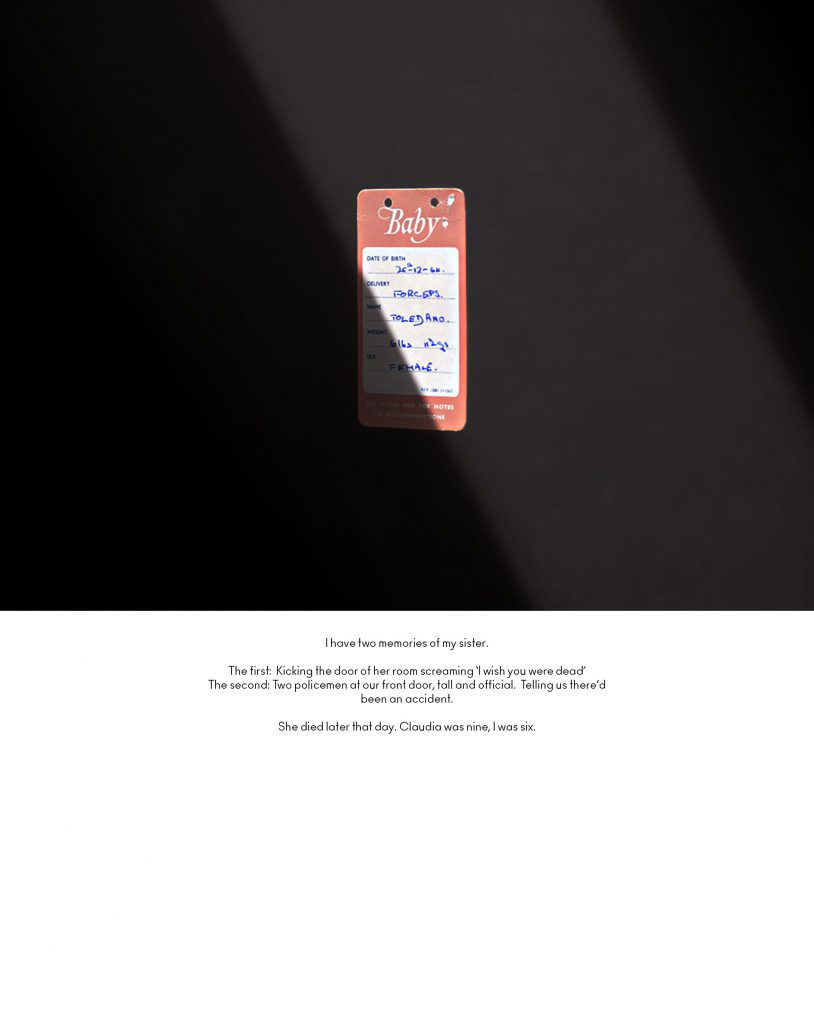
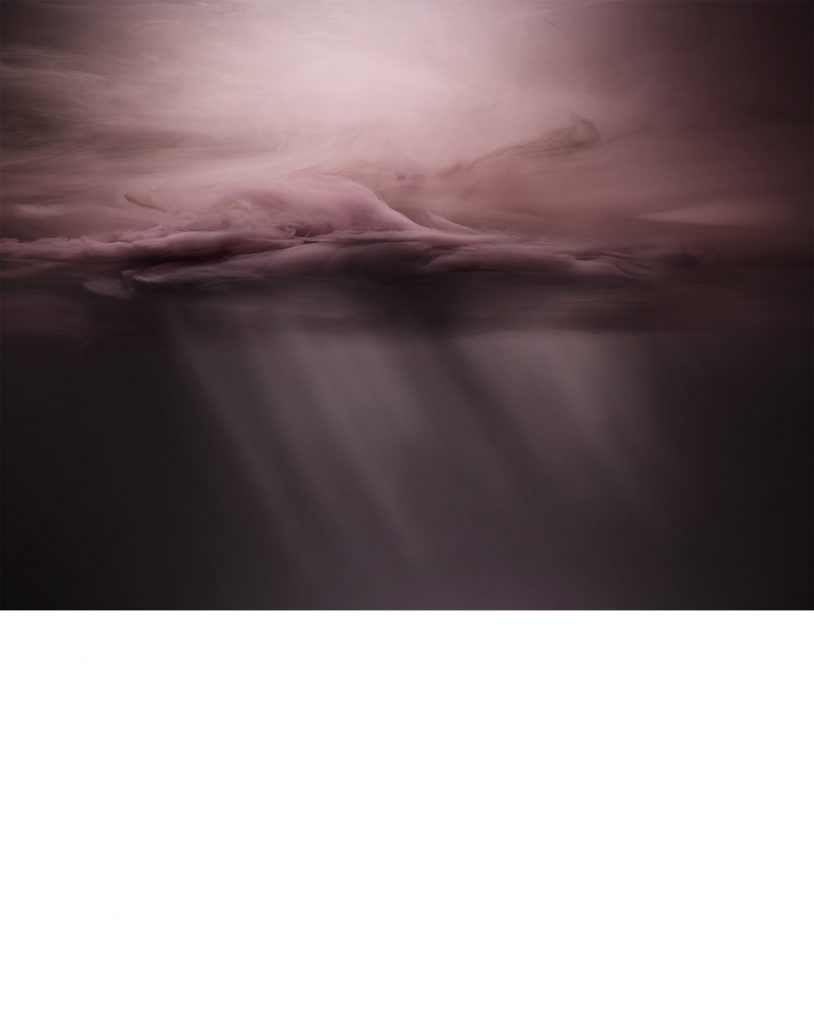
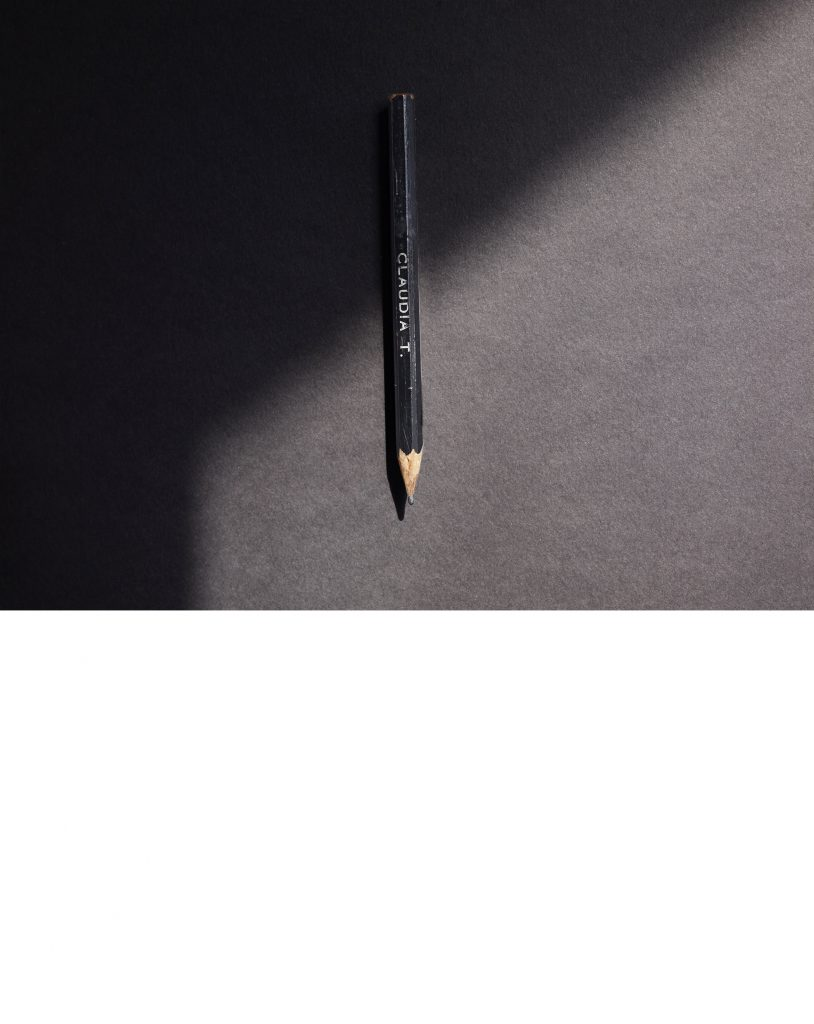
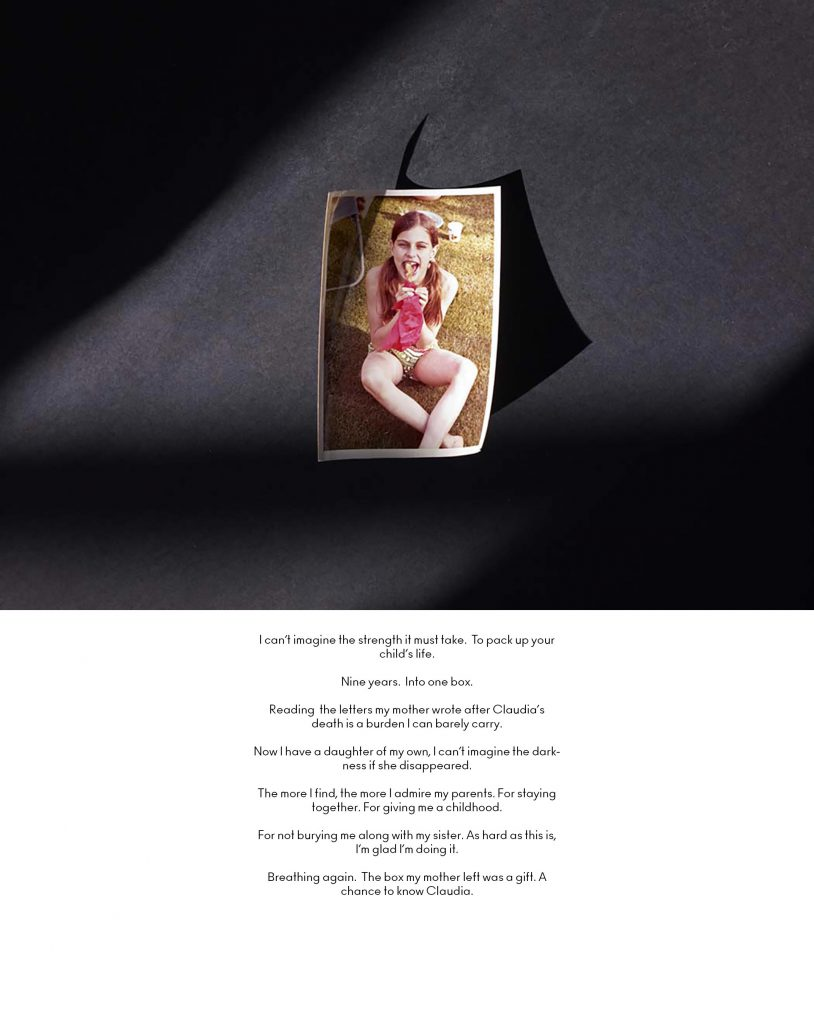
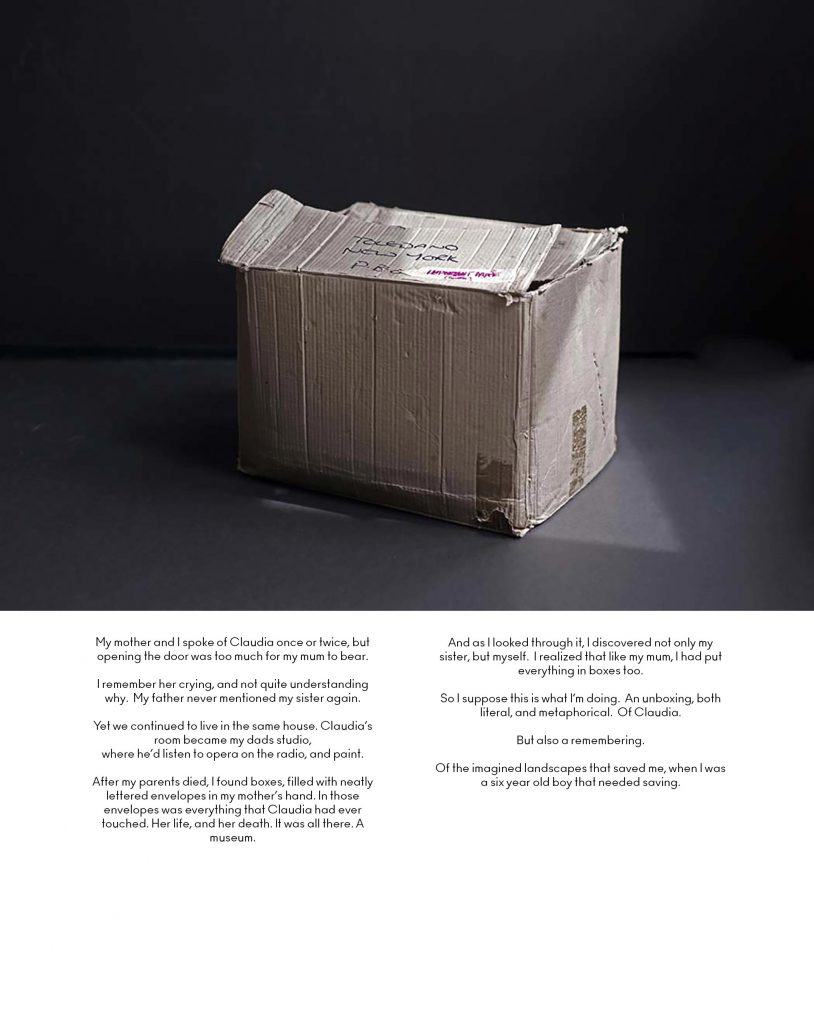
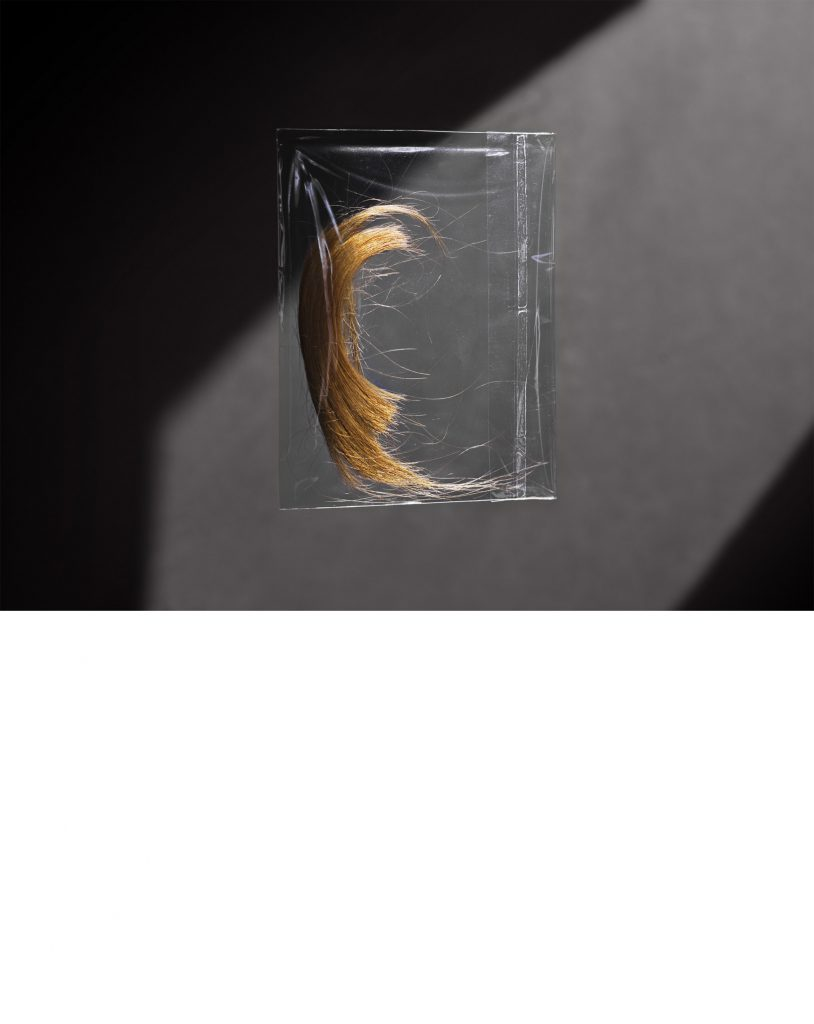
The six images above are just a small example of the solemn story that Toledano sought to represent in this narrated photobook, an anecdote of how the death of his sister, Claudia, at age nine, left an unknown and empty presence in his life. His exploration of this event resonates with the human psyche, with it occurring 40 years prior due to a fire. Toledano mixes still-life images, text and atmospheric, ‘heaven-like’ images to not only see this section of his life from a clearer perspective, but also put the viewer into the shoes of his six year old self in order to make them almost relive the experience for him.
These two types of images within this photobook; ethereal-looking patterns juxtaposed by Claudia’s childhood keepsakes such as hair, her school pencil, the box of which her belongings were preserved in and her baby tag detailing her birth. The way that the photo-book has been pieced together has been done very thoughtfully, thinking about the dream-like images first comes across as some sort of escape from the reality of Claudia’s death for Toledano, imagining these landscapes that connote emotions of peace, vulnerability and freedom from demons in his mind, even as a six year old who wouldn’t be able to process such a devastating concept. How well would a six year old be able to understand death, such a traumatic and disruptive event?
‘I have no memories of my life after my sister’s death for a few years, other than an obsession with space, planets, and distant universes. ‘
The quote above suggests to me that the inclusion of images surrounding space, planets, astronomy and universes is Toledano expressing his inner child. Such a trauma to a six year old would be psychologically altering as Philip Toledano wouldn’t of been cognitively ‘ready’ to acknowledge the passing of his sister. As he states here that he has no memories of life after Claudia’s passing, this determines the conclusion that these memories of such a difficult time in his life have been suppressed and blocked out so that he doesn’t have to face such a painful truth. However, this photo-book can be interpreted as a final release of this ordeal and ultimately preparing and trying to grieve someone who has already been gone for 40 years. This gives Toleando the capability to heal and come to terms with Claudia’s passing, however this also means that he can relive the memories that he shared with her, whether he is consciously aware that they exist. However, this movement and changing of direction adds form and depth into his work, making these images show the fluidity of emotion, possibly suggesting the loss of control he had over his own when he lost Claudia.
On the other side of the spectrum, Toledano presents objects linked the Claudia’s life in a randomised order, beginning with her baby tag. This could be purposeful for the start of the photo-book being associated with the start of life, with a baby being a new beginning. Toledano stated that:
‘After my parents died, I found boxes of her things, things I’d never seen before, neatly packed away, a museum of sorts, created by my mother. ‘
Being almost never spoken about again in the family due to the heartache, this enabled Philip to finally get to know his sister from a more ‘outsider’ perspective, getting an explanation as to who she was, how she loved her parents and what happened after she passed. Toledano compiles many images of Claudia’s belongings, as well as key pieces of information to tell her story, this being:
- Sympathy cards for Toledano’s parents,
- A large cardboard box (the box of which her belongings were in),
- Claudia’s birthday cards,
- A shoebox,
- A piggy bank,
- Claudia’s school photo,
- Small, singular images of Claudia at home or at school,
- Her school uniform,
- Notes and cards with Claudia’s handwriting,
- A book of hers,
- A handheld fan,
- Her school pencil, engraved with her name,
- Postcards,
- A giraffe ornament,
- Her hair,
- A photo album,
Towards the end of the photobook is when the images begin to get dark, painful and depressing. The last two images of objects capture the blueprint of which Toledano’s father had to draw his daughter’s own tombstone alongside the folder containing her certificate of death. I feel that, similarly to the beginning, this makes the photobook become more cohesive, being that the end of Claudia’s life is represented through the ending of Toledano’s storyline. Within the still-life images, Toledano moves his lighting to create shadows over the different objects involved over black card, angling the camera from different viewpoints to create dynamic lines over each object in a different way. The shadows are either solely parallel, going from one corner of the image to the opposed, however many of the images hide shapes within them, made out of shadows. Because these shadows aren’t directly centred around the objects themselves, this could be used for creating an ‘out of place’ tone in the work.
ANALYSIS OF HIS WORK:

This image from Philip Toledano’s ‘When I Was Six’ project really resonated with me and is one of my favourites from the photobook. This still-life captures Claudia’s school summer dress from when she was nine, placed neatly and cautiously into what seems to be an adult shoe box with the lid off, accustomed by tissue paper underneath. When the image is initially viewed, the first thing that I notice is the tension between the blocked black background with the checkered pattern on the dress. This juxtaposition creates a type of optical illusion as this is such a dramatic contrast, making this burst of colour and the textural aspect of the dress look out of place and adds an aspect of solemnity for the viewer to begin to pick apart the images to come. The way that the box is placed just out of centre, pushed to the side every so slightly, gives the image the theme of the uncanny, something that isn’t just quite right. I also find this where the box isn’t placed exactly straight, appearing to have been just pushed into the lens with no real thought behind it. I consider this to be a purposeful action, possibly to symbolise how this box containing all of the objects that are associated with Claudia, including her school uniform, were pushed aside for 40 years unbeknownst to Toledo, only to be discovered once his parents had passed away. The tissue paper behind the dress is crinkled, showing its age as its been discarded for so long. However, I find that this may resemble the memory of Claudia withering away from within the box over the years, specifically due to Toledo stating that ‘I have no memories of my life after my sister’s death for a few years’. What I find is the most motivating factor within Toledano’s image is the lighting technique he has used. This image has been taken from a bird’s eye view using artificial light, however this lighting is in a squared shape, possibly done by using a specific head on the light above or, if he didn’t have the equipment for this, perhaps using different material to create this square outline as it is not entirely perfect. As the lighting has been pushed to the left side to oppose the dress slightly to the right, I feel that this may be reflective of how young Claudia died, explaining why only a partial selection of the dress has been highlighted by this glow. I also feel that this may be representative of that feeling of emptiness and loneliness that we find after a loved one has passed away, as I said before, showing that the beginning stages of grief may lure someone to begin to question their place in the world, what their purpose is. This could be reflective of the shift in Toledano’s family dynamic when he was younger, demonstrating how Claudia wasn’t mentioned much again due to the heartache, making her life slowly disappear into the darkness.
Links:
https://mrtoledano.com/info/: Artist reference: Philip Toledano https://mrtoledano.com/slideshow/when-i-was-six/: Artist reference: Philip Toledanohttps://www.lensculture.com/phillip-toledano https://time.com/3737833/phil-toledano-when-i-was-six-photobook
